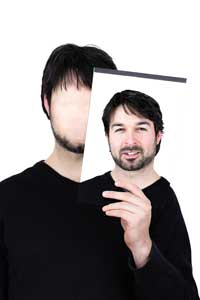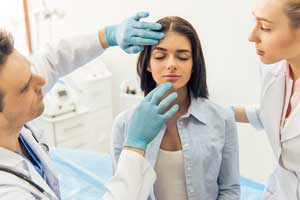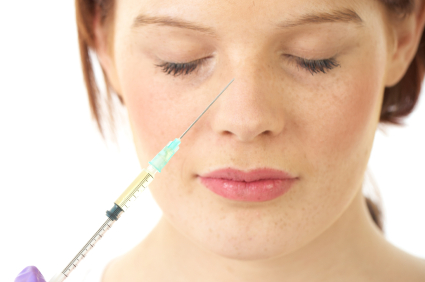 Social media’s presence in our everyday lives has done nothing but grow. Whether one prefers Instagram, FaceBook, Twitter, blogs, or vlogs, it is almost guaranteed that each and every person who has access to a smartphone or computer checks in with their online “friends” dozens of times a day. At first thought it would seem that this is good for our mental health — we are more connected, right? — but in actuality it can be very detrimental.
Social media’s presence in our everyday lives has done nothing but grow. Whether one prefers Instagram, FaceBook, Twitter, blogs, or vlogs, it is almost guaranteed that each and every person who has access to a smartphone or computer checks in with their online “friends” dozens of times a day. At first thought it would seem that this is good for our mental health — we are more connected, right? — but in actuality it can be very detrimental.
Take Instagram model Essena O’Neill, for example. In a very public announcement, O’Neill left Instagram — abandoning her thousands of followers. Even though she was earning up to $1,400 per sponsored post, she said the money wasn’t worth the negative effects endured from a daily addiction to comparison. Seeing others’ “perfect lives” does cause one to compare and contrast our own struggles and realities, and it can be hard to remember that what we see is only what someone else WANTS us to see. The reality can be very, very different!
Self-worth should not be measured in “likes,” and our value as a person does not equal how “pretty” or “handsome” we are. O’Neill edited her photo captions to reflect the amount of time she spent on perfecting her appearance, and many people were very surprised that her “morning look” only came about after hours of preparation.
Keeping our online identity close to our true identity is of the utmost importance, researchers say. If we stray too far from our true selves, then there is a much higher risk of social anxiety. Staying in the present moment is necessary as well, and it definitely wouldn’t hurt to put a cap on the amount of times you click over to FaceBook and Instagram! Remember that a picture can be worth a thousand words, but those words were written by someone who wanted to write a very specific book — and you don’t get the whole tale from just a page (or, should we say a photo!).






























 The results are in: Americans spent a LOT on plastic surgery! It was predicted in 2013 that more and more Americans would continue to undergo cosmetic procedures, and that that they have! The American Society of Plastic Surgeons has released new data it compiled throughout 2014, and the findings are very comprehensive. Some are old and some are new… but all are interesting!
The results are in: Americans spent a LOT on plastic surgery! It was predicted in 2013 that more and more Americans would continue to undergo cosmetic procedures, and that that they have! The American Society of Plastic Surgeons has released new data it compiled throughout 2014, and the findings are very comprehensive. Some are old and some are new… but all are interesting! Everywhere you turn, you hear a new “truth.” Whether you are searching for answers about beauty, diet, or nutrition doesn’t matter — regardless, it is almost impossible to navigate the vast number of health “experts” and their personal opinions. Why is this? Perhaps it is because the definition of “truth” has morphed from that of hard, scientific fact to personal viewpoint: What was once only fact by science is now, in fact, truth by personal science.
Everywhere you turn, you hear a new “truth.” Whether you are searching for answers about beauty, diet, or nutrition doesn’t matter — regardless, it is almost impossible to navigate the vast number of health “experts” and their personal opinions. Why is this? Perhaps it is because the definition of “truth” has morphed from that of hard, scientific fact to personal viewpoint: What was once only fact by science is now, in fact, truth by personal science.
 Dermatologist or Plastic Surgeon?
Dermatologist or Plastic Surgeon? Nose job: When you think of plastic surgery, this is probably the first thing that pops into your head, right? If you answered yes, it is for good reason. Nose jobs, also known as rhinoplasties, remain the most popular facial plastic surgery procedure for both men and women.
Nose job: When you think of plastic surgery, this is probably the first thing that pops into your head, right? If you answered yes, it is for good reason. Nose jobs, also known as rhinoplasties, remain the most popular facial plastic surgery procedure for both men and women. Kylie Jenner reports that her lips were enhanced “naturally”, but fans don’t believe her. Those wanting to emulate her have began lip “cupping” and it has led to a social media frenzy. Lip cupping may have originated in China or Egypt thousands of years ago, but versions of cupping have been present for decades (think late night cable TV ads for breast and penile enlargement suction devices!).
Kylie Jenner reports that her lips were enhanced “naturally”, but fans don’t believe her. Those wanting to emulate her have began lip “cupping” and it has led to a social media frenzy. Lip cupping may have originated in China or Egypt thousands of years ago, but versions of cupping have been present for decades (think late night cable TV ads for breast and penile enlargement suction devices!). Those who cannot speak are being given new hope. Six percent of the US population has a voice disorder that, unfortunately, often leads to the inability to speak. Usually arising from vocal cord damage, Harvard and MIT researchers have been tirelessly working on a solution to this vocal cord problem.
Those who cannot speak are being given new hope. Six percent of the US population has a voice disorder that, unfortunately, often leads to the inability to speak. Usually arising from vocal cord damage, Harvard and MIT researchers have been tirelessly working on a solution to this vocal cord problem. Yes, unfortunately, it may be true. The term “tech neck” is evolving: No longer does it just mean having the danger of hunched-over shoulders and a sore back — now it has a cosmetic meaning, too.
Yes, unfortunately, it may be true. The term “tech neck” is evolving: No longer does it just mean having the danger of hunched-over shoulders and a sore back — now it has a cosmetic meaning, too. Traveling to Turkey for…. Hair?
Traveling to Turkey for…. Hair?